We use cookies to make your experience better. To comply with the EU GDPR e-Privacy directive, we need to ask for your consent to set cookies. Learn more.
Finishes for Hardwood Floors - Why Are They Different?
The aim of this article is to explain the unique attributes of the different finishes for hardwood floors, in order to help you choose the right type according to your own personal taste and needs. Each wood floor finish has its own benefits and appearances. Your final decision will determine how your surface should be cleaned and maintained.
To find more about wood floor maintenance click here
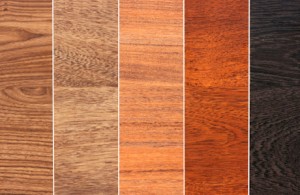 Image courtesy by mixmag-greatest.com
Image courtesy by mixmag-greatest.com
But what exactly are finishes for hardwood floors?
Wood finishes refer to the process of protecting your floor against wear, dirt, stains and humidity while giving the wood its color and luster. If you decide to install a new floor or refurbish your existing one, a quality finish project is necessary in order to ensure protection and create a long-lasting beauty.
Note: Click here to find out more about installation of hardwood floors.
For those looking to buy a new floor, the question is whether you want to apply the finish yourself or purchase directly pre-finished hardwood flooring.
Unfinished hardwood flooring:
An unfinished wood floor as the name indicates refers to the type of flooring that is delivered raw, and once installed is sanded, stained and sealed.
Although pre-finished flooring is the most popular of finishes for hardwood floors, investing in unfinished hardwood flooring will offer you a wider variety of colors and finish. The fact that finishing is applied on the entire area once the floor is installed, will ensure there is a level of continuity on the surface compare to pre-finished floors where each panel has been refinished separately. In addition, these floors can be easily matched with any other existing wood floors you might have in some parts of your house. It is almost impossible to find a pre-finished floor that will match with the rest of the floors, but you can always customize an unfinished hardwood floor in order to give it the same appearance.
Another benefit of unfinished hardwood flooring worth considering is stability. The fact that boards fit perfectly together and you are able to sand them once they are installed will ensure greater stability than a pre-finished hardwood floor, where the panels are finished separately. This is a distinct advantage for areas expected to receive heavy traffic.
Last but not least, even though installing and finishing your unfinished hardwood flooring is a time-consuming process which might last for days, it will usually cost you less than pre-finished floor. Additionally it will provide greater value for your home, as if you decide to sell it one day, the next owner will be able to customize the floor according to their own personal taste.
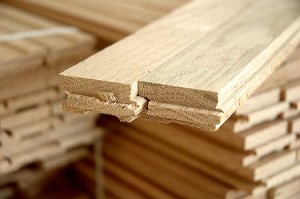 Image courtesy by home-style-choices.com
Image courtesy by home-style-choices.com
Prefinished hardwood flooring:
Pre-finished hardwood refers to flooring that is already coated with stain and urethane by the manufacturer before distributed on site. They are available in many color choices and usually last longer than unfinished floors.
It is obvious that installation of pre-finished hardwood is faster and easier compared to unfinished floors as you don't have to undertake the extra step of sanding and staining once the floor is installed. You can simply walk on it once installation is complete. Hence, you will avoid all the dusty mess spread in the room through the sanding process as well as, all toxic ingredients and unpleasant smells.
Moreover, since the floor has been coated at the factory with powerful chemical sealers which are not available for unfinished floors, the finish will be very durable and free of dust or brush hairs etc. In addition it will come under a long-term warranty by the manufacturer and in general it will last longer before restoration needed. This also implies that maintenance of pre-finished floors is easier, thanks to the strong coat applied on the surface which provides great resistance on humidity, stains and discoloration.
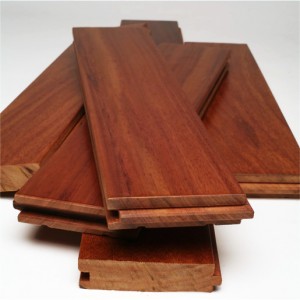 Image courtesy by cambridgemomsblog.com
Image courtesy by cambridgemomsblog.com
Note: Finishes for hardwood floors should be decided upon when ordering the product.
Which type of finish is best for my hardwood floor?
In order to choose which finishes for hardwood floors is best you need to consider:
- Your lifestyle
- The amount of traffic your floor is expected to receive
- The amount of effort you are willing to put into maintenance
All hardwood floors require regular maintenance, but different finishes will play a major role on the appearance of your floor as well as how you maintain the surface long term.
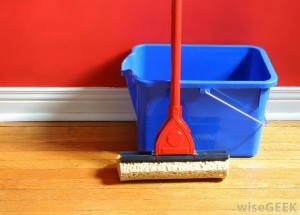 Image courtesy by wisegeek.com
Image courtesy by wisegeek.com
Types of hardwood floor finishes:
There are two types of finishes available to choose: surface or penetrating finishes.
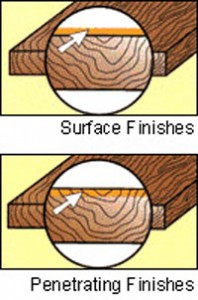 Image courtesy by contemofloorcoverings.com
Image courtesy by contemofloorcoverings.com
Surface finishes are the most common option nowadays and as the name indicates this type of finish will ensure protection by laying on the surface and forming a shield between the floor and the environment. Clearly, when you are touching the surface you are actually touching the finish. Surface finishes consist of synthetic resins, solvents and other ingredients, and are usually referred as urethane's or polyurethanes. They are durable, resistant to moisture as well as easy to maintain and any of these finishes are suitable for the kitchen or other rooms where water is expected to leak on the floor often.
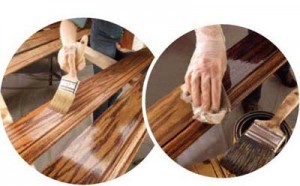 Image courtesy by fermalflooring.com
Image courtesy by fermalflooring.com
Penetrating finishes are oil-based finishes and can be found on most of residential hardwood floors today. As the name implies, such finishes soak or penetrate deep into the wood pores in order to protect the floor from dirt and stains. In addition, these oils might also contain a stain, in order to enrich the color of the flooring. Penetrating finishes are difficult to apply and you can choose between high gloss, low gloss or satin finish. For extra beauty and wear resistance wax can be used, but needs to be reapplied periodically.
Furthermore, penetrating finishes are suitable for most spaces, except areas where the surface might come often in contact with water, such as kitchens or other daily eating areas. Not that they are not moisture-resistant, but if water stays for a short period of time on the surface, spots will appear.
Although penetrating sealers are difficult to apply, they can easily be repaired. Also, areas of the floor that begin to show wear can be refinished by blending the new finish into the existing one. Signs of the repair won't be obvious. Lastly, keep in mind that only certain cleaning products can be used on the floor when a penetrating finishes are applied. Water is forbidden!
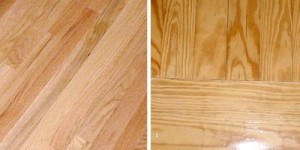 Image courtesy by tlc.howstuffworks.com
Image courtesy by tlc.howstuffworks.com
Surface finishes:
There are four types of surface finishes available:
- Water-based urethane - This is a durable and moisture-resistant finish, which is easy to apply and doesn't take more than two to three hours to dry. Once applied, it appears crystal clear and its main characteristic is that it won't turn yellow or darken over time. In addition water-based urethane is an environment friendly finish and cleans up easily as you will need only soap and water. Note: highly recommended for DIY project.
- Oil-based urethane - This is the most popular of surface finishes for hardwood floors and is available in gloss, semi-gloss and a satin sheen. It has a durable finish which consists of a blend of synthetic resins, plasticizers and other ingredients, and once applied it gives the wood a rich glow that can't be achieved with water-based finishes. Oil-based urethane is easy to apply but can take approximately eight hours to dry. It is important to mention that this type of surface finish tends to turn amber and yellow with age. Also, keep in mind that such finish requires more frequent maintenance, but is cheap to purchase.
- Moisture-cured urethane - This type of finish is the most durable and moisture-resistant among surface finishes. It is extremely difficult to apply, thus is not recommended for a "DIY project". Once applied, it has a strong odour and as water-based finishes, it takes two to three hours for moisture-cured finishes to dry, but in humid conditions. It is mainly used on floors where high traffic is expected to be received, and it is available in gloss or satin. Additionally you have the option to choose between non-yellowing and the ambering type.
- Conversion varnish - Conversion varnish finish is also known as "Swedish finish" due to its origin. It is a hard and durable, non-yellowing finish which has the ability to keep its natural look for long time. This type of surface finish is difficult to apply and it is better to be carried out by a professional. Like moisture-cured urethane finish, it has a very strong odor when applied, and it takes about eight hours to dry. In terms of appearance it is available in clear or slight amber.
Penetrating finishes:
- Linseed oil - Linseed oil is environment friendly oil which has been used for centuries and is also known as drying oil. Its main characteristic is that it dries slowly, but it will get harder and stronger by absorbing air over the time.
- Tung oil - This is probably the most popular of penetrating finishes for hardwood floors. It is easy to apply, and once applied it gives to the floor a slightly amber appearance. It is environmental friendly product and it doesn't darken the timber.
- Danish oil - This is a mixture of varnish and Tung oil. It is an environmental and durable product that is easy to apply and provides a hard-wearing finish to the floor. Once applied it offers the floor a natural satin seen and usually three coats are required for a better result. Depending on the blend and the amount of coats being used, its drying time varies between 7 to 24 hours. Lastly, due to the fact that is food safe, Danish oil is recommended for places like restaurants or children's playrooms.
I hope that explains how different finishes for hardwood floors are used and why they should be consider, if we've missed something or you want to add please comment below!

